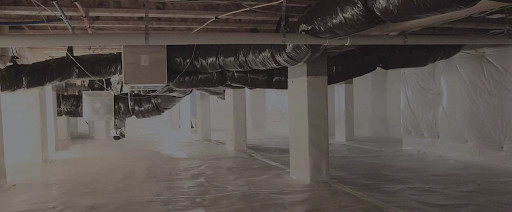A crawl space is a significant part of any property. This is the buffer space between the property’s foundations and the internal flooring, which means it fulfills a vital role in ensuring that the property remains insulated and protected from moisture in the nearby ground. It may also complete other practical functions, providing an access point to pipe and ductwork as well as other aspects of your property’s infrastructure.
Whether you have a crawl space at your residential property or if your commercial premises features an under-floor space, the situation is the same — you need to make sure that this space is doing its job properly. This means protecting it with measures like crawl space encapsulation.
Read on to learn more about crawl space encapsulation as we explore its benefits and how long does crawl space encapsulation last?

What Is Crawl Space Encapsulation?
Crawl space encapsulation is a process that seals your crawl space, increasing the insulation and preventing moisture from entering the space. Typically, heavy-duty polythene sheets are used to carry out the sealing and encapsulation process.
During encapsulation, the floor and walls of the crawl space are lined with this sheeting, keeping moisture outside of the space. Polythene sheets may also be applied to the ceiling of the space, although this is not always necessary.
Preparing for Crawl Space Encapsulation
What is the best way to insulate a crawl space with a dirt floor? Well, crawl space encapsulation certainly helps to protect your space and property, but only if the dirt floor — as well as the walls and ceiling — are properly prepared beforehand. Learn more about how this is done.
- Remove all standing water from the space — If there is standing water in your crawl space, this will make it very difficult to achieve an effective seal and may even put workers at risk during the encapsulation process.
- Ensure proper lighting — There is unlikely to be much natural light in your crawl space, if there is any at all. You will need to make sure that you can properly light the space so that encapsulation can be carried out safely and efficiently.
- Remove any debris or sharp objects — Abrasive debris can damage the encapsulation material, reducing its lifespan. Make sure all of this debris is removed before the process begins.
- Examine the space — Check all electrical wiring, plumbing, wood framing and other components within your crawl space. Make sure there is no damage to any of these components. If there is a fault in the plumbing, this could cause water leaks within the encapsulation layer, while faulty electrical components could cause health and safety issues.
- Check the crawl space environment — Are there any unpleasant odors in the air? If there are, you’ll need to identify their source. Patches of mold or animal remains could be the culprit, and these will need to be removed before encapsulation.
- Plan for air conditioning and dehumidification — You may need to add air conditioning and dehumidifier units to your property to keep the crawl space within the ideal atmospheric conditions. You need to plan where you will install these units within the crawl space.
- Identify the areas to be left unsealed — Your local building codes may not permit you to seal every part of your crawl space. Check with your local authority to ensure your encapsulation project is up to code.
Benefits of Crawl Space Encapsulation
Many people wonder if it is truly worth it to encapsulate a crawl space. While encapsulation does require investment in terms of time, money, and effort, it certainly provides significant benefits to your property.
- Improved insulation, reducing energy bills at your property while maintaining a pleasant and comfortable temperature
- Better air quality, both within the crawl space and across the rest of the property
- Reduced risk of fungal growth and mold, keeping your property structurally sound
- Eliminates many of the pests and infestations that can take hold in a crawl space
So How Long Does It Last?
How long does crawl space encapsulation last?
Typically, crawl space encapsulation should last anywhere from 10 to 15 years. However, if you purchase high-quality encapsulation materials and prepare your space in the proper way, you may be able to extend this lifespan. Encapsulation with robust, heavy-duty materials can last for more than 20 years.
Reap the Benefits of Crawl Space Encapsulation for Longer
Crawl space encapsulation provides a wealth of benefits to your property, from better energy efficiency right through to reduced pest infestation and mitigation of mold and fungal growth. However, to get the best from your encapsulation project, you’ll need to make sure you are working with the best materials. You’ll also need to prepare your space properly.
To learn more about crawl space encapsulation and about how you can get the very best from your project, take a look at our resource pages or reach out to our team at Moisture Loc.
